What Kind of Squirrel House to Buy: Best Boxes for Pet or Outdoor Squirrels
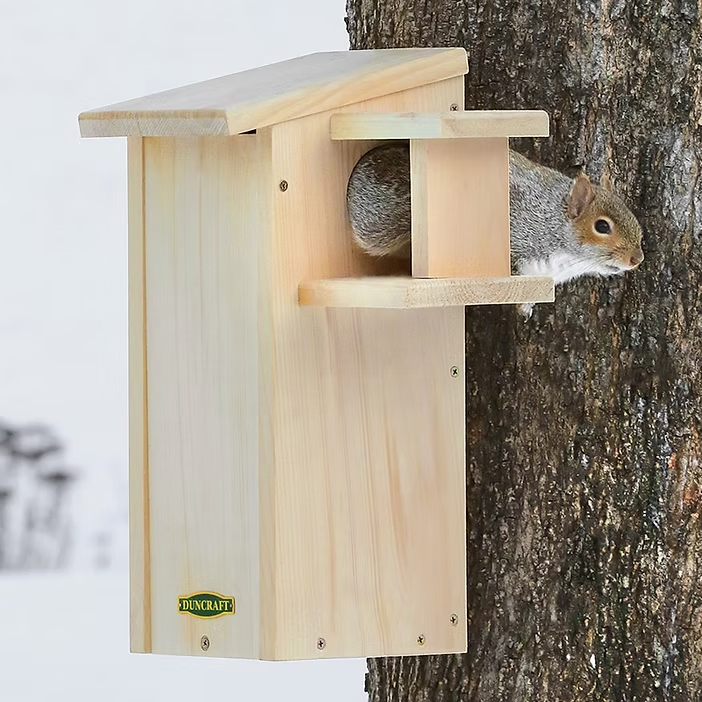
When choosing the right squirrel house for your pet or backyard squirrels, it’s important to select a design that prioritizes safety, insulation, cleanliness, and predator protection. After building and testing countless squirrel boxes, we’ve learned which designs truly work—and which ones to avoid.
This guide walks you through the best features to look for when buying or building a squirrel house, along with real pros and cons of common models and DIY fixes to improve them.
🛠️ Whether you’re adopting a tame squirrel or supporting local tree squirrels in your area, the right squirrel house will ensure long-term safety, comfort, and usability.
A well-designed squirrel house not only provides protection from harsh weather and predators but also gives squirrels a secure place to rest, store food, and raise their young. From entry hole size to nesting material options, every detail matters. With the right setup, you’re not just building a shelter—you’re building a home.
Top 3 Features to Look for in a Squirrel House
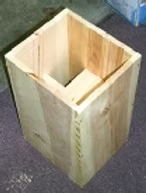
1. 🪟 Inner Ledge or Shelf
An inner shelf is a game-changer. It helps block wind and rain, provides a cozy lookout spot, and most importantly, makes it harder for predators to reach the squirrel inside. It also allows squirrels to retreat out of sight for added security.
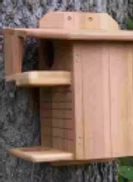
2. 🛡️ Predator Guard
A predator guard is a protective barrier around the entrance hole. It prevents raccoons, snakes, and other threats from easily reaching inside. It also helps reduce nesting competition from birds or other animals, while shielding the opening from wind and rain.

3. 🚪 Clean-Out Door
Over time, squirrel houses can accumulate debris and parasites. A clean-out door allows you to safely empty the box and refresh bedding. Look for designs that include a screw-on latch to keep the door tightly closed. This adds years to the life of your squirrel house.
⚠️ Common Squirrel House Designs – Pros, Cons & Fixes
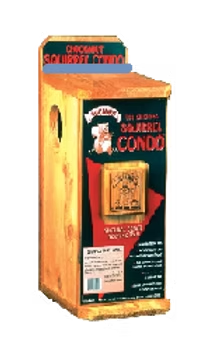
The Squirrel Condo – Good, But Weather Sensitive
This squirrel house offers a solid structure, especially in warmer climates. It’s easy to install and has comfortable perches. However, in wet or cold areas, it may not offer enough protection.
Its open design allows for good airflow, making it ideal for summer use, but it lacks the insulation needed for colder seasons. To improve its functionality year-round, consider adding weatherproofing, extra bedding, or positioning it in a sheltered area. While it’s a great starter option, some minor upgrades can make it a much safer and cozier home for squirrels in harsher environments.
Pros:
- Easy to mount with backboard
- Roof slope allows water runoff
- Perch-friendly roof and base
- Cedar wood repels fleas and parasites
Cons:
- No roof overhang—exposes the interior to rain
- Too shallow to prevent predator access
- Seam between roof and backboard may leak
- Aromatic cedar can be toxic for up to 2 years
Fixes:
- Add a larger overhang board above the entry
- Install a predator guard at the hole
- Seal roof seam with waterproof caulk or install flashing
- Air out cedar wood for several weeks before use
The Ejector Box – Great for Indoor Use or Pre-Release Pens
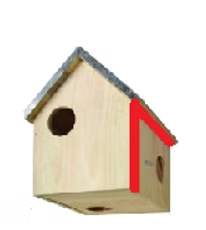
A multi-entry box ideal for squirrels in transition (like teenage or active squirrels). Not recommended for outdoor, long-term use due to safety concerns.
While the multiple entry points offer flexibility and reduce territorial conflict among active or juvenile squirrels, they also compromise protection against predators and harsh weather. These boxes are better suited for indoor enclosures or temporary setups during rehabilitation. For permanent outdoor housing, choose a sturdier, single-entry design with better insulation and security features.
Pros:
- Multiple entry/exit points for quick escapes
- Encourages independence and activity
- Good in protected indoor environments
Cons:
- Roof too steep for squirrels to sit on
- Openings are too close to nesting space—easy for babies to fall or be reached by predators
- Very little protection from rain or wind
Fixes:
- Cover the bottom with ¼-inch welded mesh to allow drainage
- Add predator guards at all entrances
- Consider a side overhang for better weather protection
The Risky Box – Raccoon’s Lunchbox
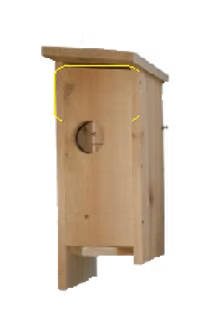
While it has good drainage and ventilation, this box’s entry placement and open design make it dangerous in predator-heavy areas.
The exposed entrance can make squirrels vulnerable to attacks from birds of prey, snakes, or neighborhood cats. If you’re using this design, it’s best to install it at a higher elevation and near dense tree cover to reduce risk. Adding an extended tunnel entrance or predator guard can also greatly improve safety without sacrificing comfort or airflow. It’s a functional choice, but extra precautions are key for squirrel security.
Pros:
- Drain holes prevent water buildup
- Backboard allows easy mounting
- Vent slot keeps it cool in hot climates
- Untreated wood is safe for chewing
- Easy back access for cleaning
Cons:
- Door too low—puts babies close to danger
- Drain holes are large enough for predators to reach through
- Design doesn’t offer true hiding depth for squirrels
Fixes:
- Add metal mesh over drain holes to keep out paws
- Install a predator shield over the front door
- Relocate the entrance higher on the box for better security
Squirrel House Tips for All Climates
- For cold or wet climates, prioritize boxes with deep nesting space, overhangs, and insulation.
- For hot regions, ensure ventilation and shade.
- Always use untreated, non-toxic wood. If painted, choose animal-safe, non-toxic finishes.
- Avoid plastic or metal houses—they retain heat and can cause overheating.
- Mount your squirrel house at least 10–20 feet above ground, away from rooflines or predator pathways.
Final Thought: Choose Wisely, Modify as Needed
Not all squirrel houses are built the same—and squirrels can be picky. Look for houses with proven features, and don’t be afraid to customize or improve a store-bought box for your environment and squirrel’s needs.
If you’ve found a great squirrel house or made one yourself, we’d love to see it! Send us photos or tips so we can keep improving this guide.
